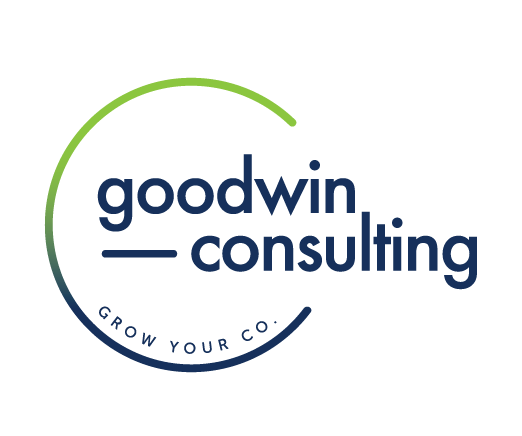In my years at the helm of Goodwin Consulting, I’ve witnessed a diverse array of public speaking styles and strategies, ranging from profoundly impactful to inadvertently lackluster. There’s no denying it: effective public speaking is a genuine skill.
Becoming a compelling speaker requires more than confidence. To acquire a reputation as an impactful presenter, you need to establish an authentic connection with your audience.
I’ve crafted many speeches for executives and trained leaders in the art of communication, so trust me when I tell you that anyone can elevate their presentation skills by embracing six simple strategies.
6 Public Speaking Tips Every Presenter Needs to Know
Whether you’re preparing for a keynote address, developing an in-depth workshop, or planning an internal business presentation, these public speaking tips will help you capture your audience’s attention and leave a meaningful impression:
1. Understand your audience
To deliver an effective presentation, you must know who you are talking to.
When I was invited to address the Tree Care Industry Association this past Monday, I knew I’d be speaking to a diverse group ranging from large company owners to small family businesses. But what made this unique group of experts tick? Three simple steps helped me tailor my keynote specifically to the tree care industry.
Subscribe. I immediately subscribed to the association’s trade publication. Diving deep into the magazine’s content was my first step toward understanding this audience’s interests, challenges, opportunities, and vocabulary.
Search. Armed with a few industry buzzwords, I could then scour the internet for stories relevant to my presentation theme: crisis planning. What crises had tree care professionals faced? What dreams and fears did they have?
Connect. My next move was to ask my association contact to connect me with any members willing to discuss the industry with me and share stories about their businesses. Directly engaging with my target audience always strengthens my presentation.
2. Speak to your audience’s needs and concerns
One of the biggest mistakes many speakers make is assuming they are the main attraction—that their stories and experiences alone will entertain or engage the audience. Personal stories are a wonderful way of bringing people into your world, but what will make the audience say, “Wow, those stories taught me something new”?
Early in my career, I worked as a speechwriter for one of Governor Bill Weld’s cabinet secretaries. This secretary had a hair-trigger temper and was known for ripping up my speeches (in front of other staff) and admonishing me to “write something #&!@ decent for a change! You don’t understand the audience! You need to know the audience!”
While I hated being dressed down in front of my colleagues, it was one of the most valuable lessons I’ve learned.
3. Incorporate compelling visuals
Creative visuals will transform a good presentation into a great one. When I prepare for keynotes, I incorporate a healthy mix of media, from videos to photos to graphics.
Visual variety helps grab and hold the attention of everyone in the room, regardless of learning style. You can’t expect an audience to keep their eyes on you the entire time, so give them another reason to stay focused toward the front of the room. Create a visual presentation that supports and enhances your spoken words, and the insights you share will be infinitely more memorable.
4. Speak the audience’s language
Every audience has a language—and I’m not talking about speaking English or Spanish or Chinese. When I consider an audience’s “language,” I’m looking at their communication style. How formal are they? What cultural references do they make? Does their vocabulary include industry-specific jargon?
My favorite high school teacher was my English teacher, Mr. Blake. Because I was the editor of my school’s literary magazine, Mr. Blake and I met regularly—and he was fascinating. One of his stories was set during his younger years. “I worked on construction sites,” he shared, “and when the crew would break for lunch, I didn’t approach a coworker and ask, ‘With whom are you having lunch today, Spike?’ No—I talked the way my coworkers talked. I’d say, “Who are you gonna eat with today, Spike?’”
The point is that when communicating with someone, making yourself understood is more important than being grammatically correct. To this day, I bring Mr. Blake’s lesson into every presentation I prepare. Speak your audience’s language, or you’ll never succeed.
5. Rehearse, rehearse, and rehearse some more
Rehearsal is non-negotiable. You might be able to fly by the seat of your pants once or twice, but show up unprepared before a savvy audience, and you’ll quickly lose their attention—and their respect. Whether you’re giving an hour-long keynote speech to an audience of hundreds or leading a half-day workshop for an intimate group, practicing your presentation is guaranteed to strengthen your delivery and refine your message.
Start at home, in front of your mirror, then graduate to a trial presentation for a colleague or friend. Consider your posture, your hand gestures, and whether you feel frozen in place or can comfortably move around to keep the audience engaged. Finally, record a video of yourself giving your presentation, then evaluate your performance through the lens of an audience member.
Think of rehearsing as building muscle memory. When your presentation flows from you naturally, you won’t miss a beat. Even if you do get momentarily derailed, you’ll be equipped for a fast recovery!
6. Make eye contact
There are numerous lessons I can share about how to walk onto a stage, what to do with your hands while talking, and ways to exude confidence through your physical presence. But the number one way to physically interact with your audience is to simply make eye contact.
Look at any audience, and you’ll find people absorbed in their phones, engrossed in note-taking, or just looking around the room. You’ll also see some very special, highly prized audience members: the ones who make eye contact with you.
Identify these engaged individuals and reward them by making eye contact in return, one after the other and then back again. Reflect their supportive energy back to them, and you’ll enjoy a presentation experience that’s fulfilling for you and your audience.
Improve Your Public Speaking with Goodwin Consulting
My team regularly helps our clients strengthen their communication and presentation skills. Our public speaking tips and insights assist clients in developing presentations that not only convey their messages effectively but also resonate with their specific audiences.
Our wealth of experience in audience analysis, content creation, and presentation techniques forms a holistic approach that also includes body language and audience interaction. We conduct deep industry research, investigate your audience’s pain points, and tailor the content to be relatable and impactful.
Whether you’re addressing an industry conference or leading a company meeting, the right preparation and approach can make all the difference.

